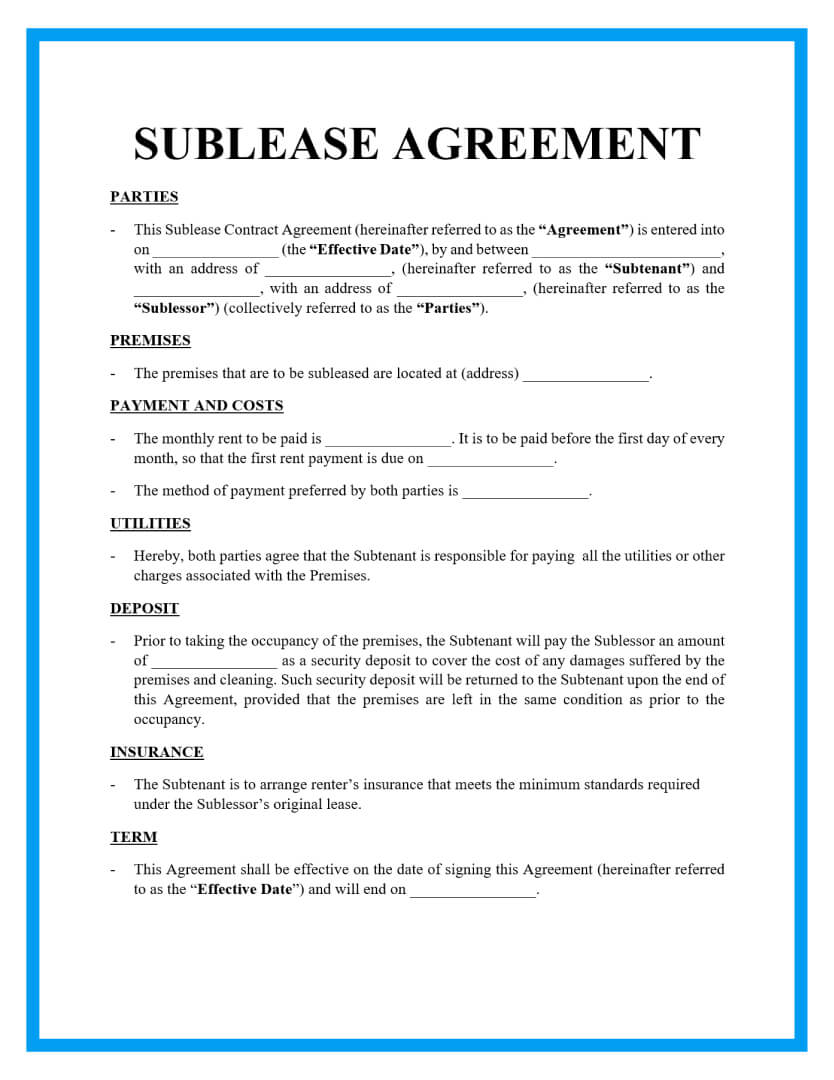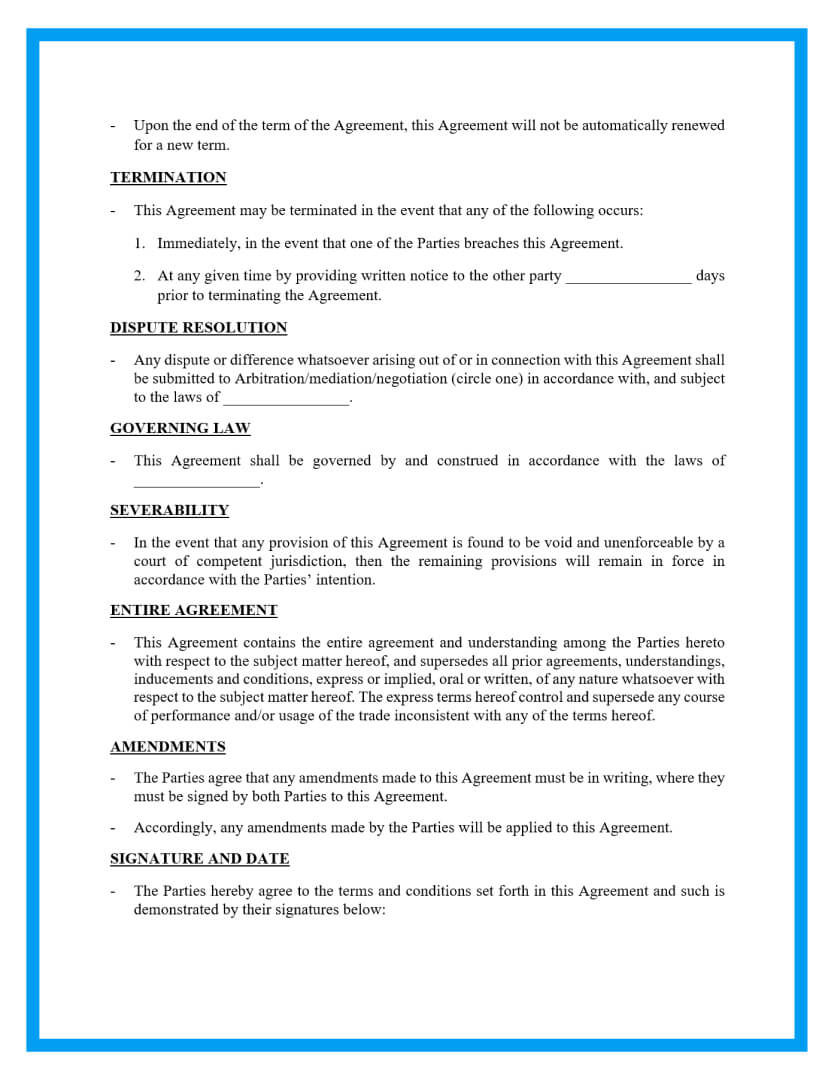
Subletting is a common practice across residential and commercial premises. We’ve consulted legal experts and proofreaders to create a sublease agreement (PDF and Word) for you to sublet the property successfully.


Subletting is a common practice across residential and commercial premises. We’ve consulted legal experts and proofreaders to create a sublease agreement (PDF and Word) for you to sublet the property successfully.
What’s in this template?A sublease is where a tenant of property leases out a portion or whole premises to another tenant. Let’s break down the process.
A tenant signs a lease with a landlord for a set period and rental fee.The tenant leases a portion of the property to a subtenant for a set period within the original lease term for an agreed rent fee.
The subtenant (sublessee) is accountable to the tenant while the tenant is accountable to the landlord as per the original contract.
Therefore a sublease agreement is a formal contract between tenant and subtenant that lays out the terms and conditions of the lease within the lease.
DISCLAIMER: We are not lawyers or a law firm and we do not provide legal, business or tax advice. We recommend you consult a lawyer or other appropriate professional before using any templates or agreements from this website.
Subletting can be a fantastic source of revenue. But it must be done correctly to avoid disputes with subtenants, agents, and landlords. That’s why we’ve created a compliant sublease agreement template for you to use with peace of mind.
Click below to access our sublease agreement sampleFirst of all, a sublease is a smart way for tenants to make some extra cash and reduce the financial pressure of paying their rent.
Tenants typically find subtenants online or through personal relationships. It can be tempting to enter verbal agreements with people you know or people that seem trustworthy.
However, horror story after horror story demonstrates that things can quickly turn ugly as subtenants misuse property and breach the privacy of other tenants.
If you’re considering subletting, a sublease contract is essential to mitigate risks from subtenants while also forcing you to get consent from the landlord keeping everything transparent.
This may seem obvious, but this step is often intentionally or unintentionally missed when subletting—which is a foundation for the next horror story. Don’t let that happen to you!
The first thing to do is to review your current rental agreement. Sometimes the landlord or agent will state whether subletting the premises is allowed or not.
Regardless of what the contract says, it’s worth reaching out to your landlord to see if subletting is feasible.
When presenting your case, be specific in what space you plan to lease and for how long. Explain your thought process behind your decision and the steps you’ll take to assume responsibility. You can even forward your sublease agreement template to show the landlord that you’re organized and sensible in your approach.
To increase your chances of having a successful subletting experience, you need to act like a landlord or a leasing agent, which means screening your applicants.
When you put out your subletting ad, take the copy from the original leasing advertisement, which enticed you to sign the contract. Be specific about inclusions, whether pets are allowed, and so forth.
Having a description advertisement will give prospective tenants more context to see if it’s worth reaching out to you.
If you receive an inquiry, get the subtenant to inspect the property. Even if you know the subtenant and they’ve seen the premises before, still get them to check thoroughly. Seeing the property with the views of formally occupying the space is different from visiting for leisure.
After the inspection, interview your potential subtenant to get a feel for their job security, personal relationships, and track record.
At this point, your advertisement, inspection, and interview would’ve narrowed down your applicants. Now it’s time to present your sublease agreement.
If a subtenant is willing to sign your contract, it’s a positive sign that they’re committed to making this arrangement work.